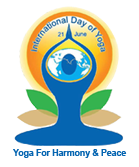Being implemented by the National Centre for Seismology (NCS) and National Centre for Earth Sciences Studies (NCESS)
The objectives include:
- Carry out research in frontier areas of seismology and geosciences
- Monitoring of earthquake activity in and around the country on 24x7 basis and preparation of earthquake hazard related products for selected cities in India.
- Deep Borehole Observatory for directly measuring the in-situ physical properties of rocks, pore fluid pressure, hydrology parameters, temperature and other parameters of an intra-plate, active fault zone in the near–field of earthquake-before, during and after their occurrence.
- Investigations related to origin of largest Geoidal low on Earth through systematic scientific observations.
- Modelling of crustal, coastal, geohydrological and atmospheric processes to assess wave climate, hydrodynamics and sediment transport along certain selected coastal stretches of west coast of India to understand the impact of coastal structures.
- Generation of high-quality Geochronological data and its characterization for dating of geologically youngest and old formations/rocks/sediments in the earth history and provide improved and quantitative understanding of the evolution of the Indian lithosphere







 Ministry of Earth Sciences
Ministry of Earth Sciences














